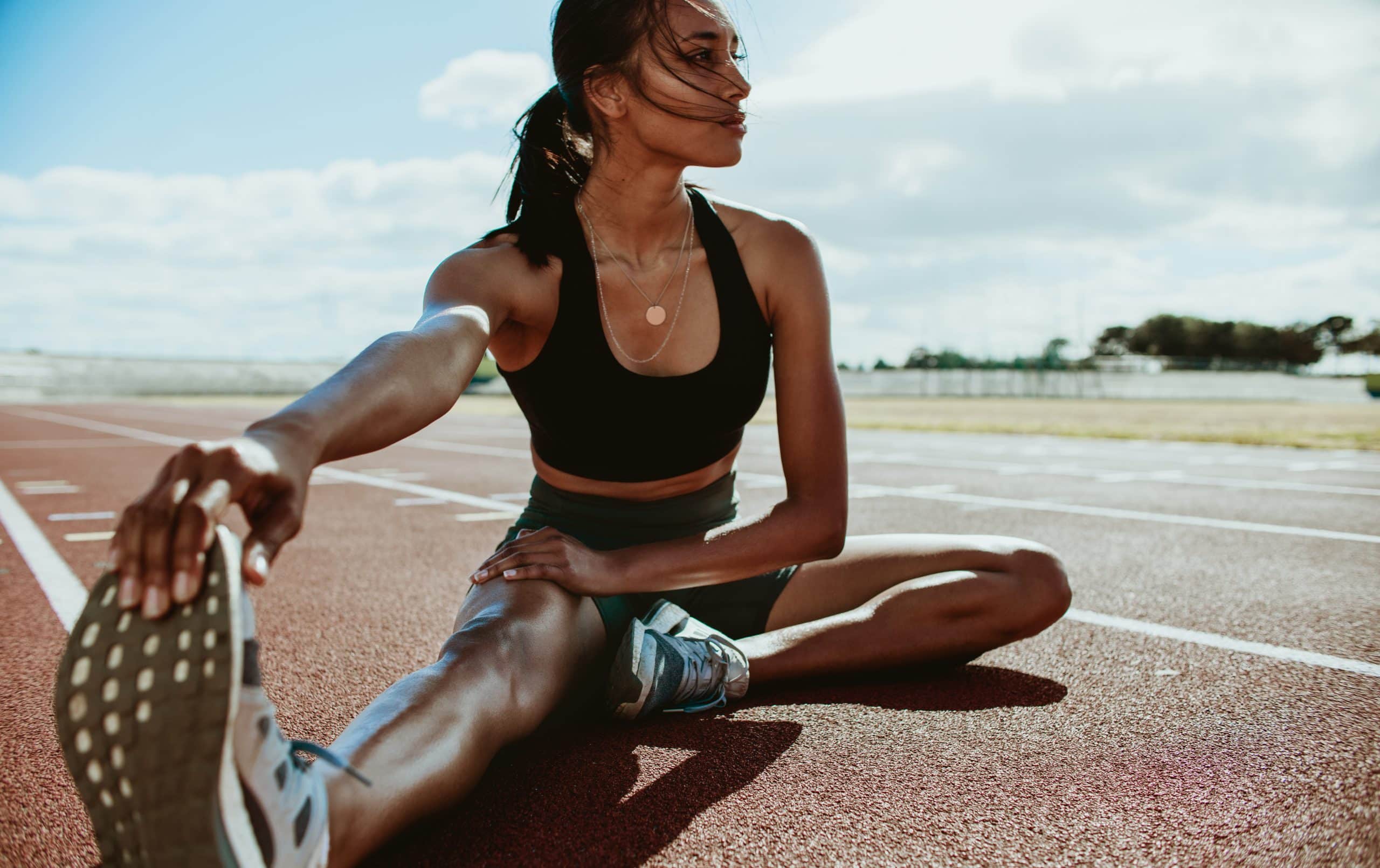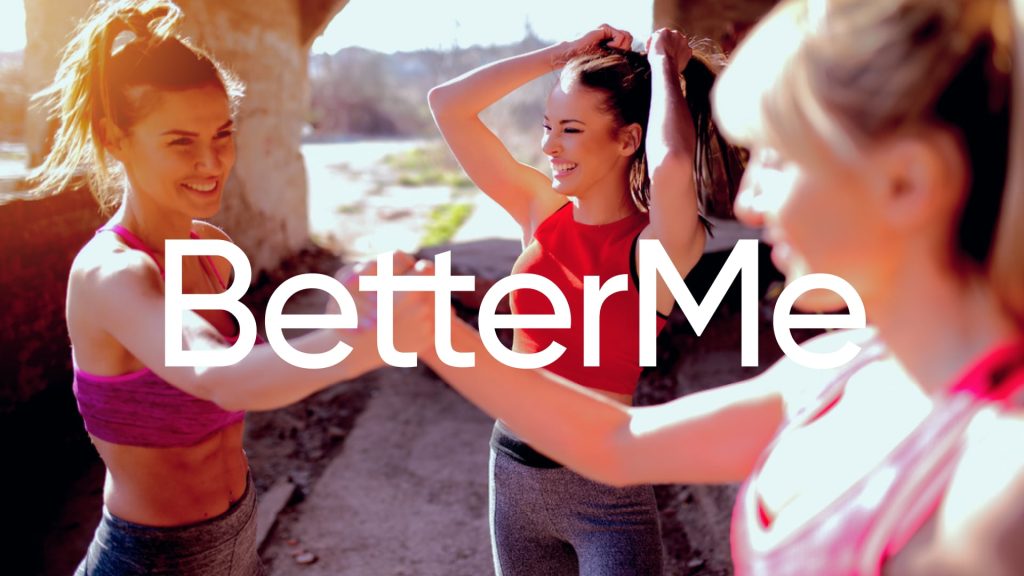Speed, agility, and quickness (SAQ) training is a type of physical training that focuses on developing the speed, agility, and quickness of an athlete. While SAQ training can be used to improve the performance of any athlete, it is most commonly used by athletes who participate in sports that require these skills, such as football, basketball, soccer, and hockey. That said, the ordinary joe can also benefit from SAQ training. If you want to improve your explosiveness, acceleration, change of direction, and overall athleticism, then this type of training is a must try out. There are also some activities that can benefit from SAQ training, such as playing with your kids, chasing after a bus, or running to catch your flight. This guide will cover everything you need to know about SAQ training, including what it is, the benefits, how to do it, and some common mistakes to avoid.
Get your personalized
meal plan!
What Is SAQ Training?
SAQ training uses anaerobic intervals to improve your speed, agility, and quickness (17).
Speed is the ability to move your limbs or body quickly, while agility is the ability to change direction quickly and without losing balance. Quickness is a combination of speed and agility and refers to the ability to react quickly to stimuli.
SAQ training generally consists of short, high-intensity bursts of activity followed by periods of rest or active recovery. These activities can be done with or without equipment and can be customized to your fitness level.
The goal of SAQ training is to help you become a better runner by improving your neuromuscular efficiency (NME) and your ability to produce force quickly.
NME is the ability of your nervous system to fire muscle fibers quickly and efficiently. The better your NME, the better your running economy (the amount of energy you use to run at a given pace) (15).
Improving your NME will make you a more efficient runner and help you run faster with less effort.
SAQ training is based on the principle of “specificity” which means that you need to train specifically for the demands of your sport (16).
For example, if you want to improve your running speed, you need to do exercises that mimic the specific movements of running such as sprinting, bounding, and plyometrics.
For overall health and fitness (people who aren’t athletes, but exercise frequently and enjoy activities such as playing with their kids, hiking, or playing tennis), any type of movement that gets your heart rate up and whatever makes you move quickly in multiple directions is beneficial.
Unlike traditional cardiorespiratory work that involves repetitive motions while neglecting frontal and transverse planes of motion, SAQ training involves multi-directional movements that work all planes of motion (11).
This type of training better addresses the demands of most sports and activities of daily living.
Read More: The Best Ab Workouts For Women: Strengthen Your Core And Get The Midriff Of Your Dreams
Benefits Of SAQ Training
There are many benefits to SAQ training, both for athletes and non-athletes. Some of the most common benefits include:
Improved Brain Signal Efficiency
The brain is responsible for sending signals to the muscles to fire (12). The more efficient the brain is at sending these signals, the quicker the muscles will fire. SAQ training can improve the efficiency of these signals, which can help to improve reaction time, coordination, and balance (9).
Improved Muscular Power
SAQ training helps to improve the ability of the muscles to produce force quickly. This is important for activities that require explosive movements such as sprinting, jumping, and change of direction (8).
The improved muscular power will help you to run faster, jump higher, and change directions more quickly.
Improved Muscle Endurance
SAQ training helps to improve the ability of the muscles to sustain repeated contractions over a period of time (7). This is important for activities that require long periods of running or other cardiovascular work such as football, soccer, basketball, and hockey.
Improved Running Economy
SAQ training can help to improve your running economy, which is the amount of energy you use to run at a given pace. The better your running economy, the less effort you will need to expend to run at a certain speed (14). This will help you to run faster and longer with less fatigue.
Improved Spatial Awareness
Spatial awareness is the ability to be aware of your surroundings and to react quickly to changes in your environment. This is important for activities that require quick reflexes such as tennis, basketball, football, and hockey.
SAQ training can help improve your spatial awareness and reaction time (6).
Improved Cardiovascular Fitness
SAQ training helps improve cardiovascular fitness by increasing the heart rate and making the heart work harder. This type of training is a great way to improve your overall cardiovascular health.
Improved Coordination
SAQ training can help improve coordination by teaching the body to move in multiple planes of motion (17). It improves your lateral, linear, horizontal, and rotational movement.
This type of training is great for activities that require quick reflexes and coordination such as tennis, basketball, football, and hockey.
If you wish to free yourself from all the extra pounds that have been weighting you down for way too long, start using the BetterMe app and overhaul your entire life!
Improved Proprioception
Proprioception is the ability to be aware of the position of your body in space (13). This is important for activities that require balance and coordination such as skiing, surfing, and gymnastics.
SAQ training can help improve proprioception by teaching the body to move in multiple planes of motion.
Improved Motor Skills
Motor skills involve the ability to perform movements with precision and accuracy. Everyday activities such as walking, running, and writing require motor skills.
SAQ training can help to improve motor skills by teaching the body to move in multiple planes of motion (5). This type of training is great for activities that require precise movements such as golf, tennis, and baseball.
Which Are The Components Of SAQ Training?
The three components of SAQ training include speed, agility, and quickness. Let’s review each component in more detail.
Speed
Speed is the ability to move the body in one direction as quickly as possible. Speed can be further divided into two types: linear speed and lateral speed.
Linear speed is the ability to move forward quickly, while lateral speed is the ability to move side to side quickly. Speed training requires the muscles to produce maximum force in a short period.
What Are Examples of Speed Training?
Some examples of speed training exercises include:
- Sprints: Sprints are a great way to train for speed. They can be performed by running as fast as possible over a short distance. On a treadmill, you can sprint for 30 seconds and then jog or walk for a minute to recover.
- Resisted Runs: Resisted runs are a great way to train for speed. They can be performed by attaching a resistance band to a sturdy object and then running against the resistance.
- Sled Pushes: Sled pushes are a great way to train for speed. They can be performed by pushing a sled across a field or track.
- Uphill Speed Runs: Uphill speed runs are a great way to train for speed. They can be performed by running at a fast pace up a hill or incline.
Read More: Fitness Over 50: Useful Tips For Success And Safety
Agility
Agility is the ability to change direction quickly and efficiently. It requires the coordinated use of the eyes, feet, and body to avoid obstacles and maintain balance (2).
Agility can be trained using cones, ladders, and other objects to create an obstacle course. The athlete must be able to move quickly and efficiently through the course while maintaining balance.
What Are Examples of Agility Training?
Some examples of agility training exercises include:
- Cone Drills: Cone drills are a great way to improve agility and coordination. They can be performed by placing cones in a line and then running around them, weaving in and out.
- Ladder Drills: Ladder drills are a great way to improve footwork and coordination. They can be performed by placing a ladder on the ground and then running through it, stepping on each rung.
- Obstacle Course: An obstacle course can be created using cones, ladders, and other objects to create a challenge. The athlete must be able to navigate through the course quickly and efficiently while maintaining balance.
- Lateral Shuffle: The lateral shuffle is a great way to improve agility and coordination. It can be performed by placing two cones five feet apart and then shuffling from side to side between them.
- Dot Drills: Dot drills improve knee and ankle strength, giving you better control over your feet. To perform dot drills, place five dots in a line two feet apart and then hop on one foot from dot to dot.
Quickness
Quickness is the ability to react quickly to a stimulus. It requires the ability to process information quickly and then respond accordingly (1).
Quickness can be trained by using objects such as a ball or cone to create a reaction. The athlete must be able to react quickly and accurately to the object.
What Are Examples of Quickness Training?
Some examples of quickness training exercises include:
- T-Drill: The T-drill is a great way to improve reaction time and coordination. It can be performed by placing four cones in the shape of a T and then running from cone to cone, touching each one.
- Reaction Ball: The Reaction Ball is a great way to improve reaction time and coordination. It can be performed by placing the ball on the ground and then reacting to it as it moves.
- Ball Drop Drill: The ball drop drill is a great way to improve reaction time and coordination. It can be performed by dropping a ball from a height and then catching it before it falls
- Mirror Drill: The mirror drill is a great way to improve reaction time and coordination. It can be performed by having a trainer perform quick and random movements while you mirror their movements.
Yanking yourself back in shape has never been so easy with our game-changing fitness app! Start transforming your life with BetterMe!
How To Tailor Your SAQ Training Programme
A kinetic chain assessment (KCA) is a series of tests that identify an athlete’s movement deficiencies. These tests help to create a bespoke SAQ training program that is specific to the individual’s needs (10).
A KCA should be performed by a qualified coach or physiotherapist. It typically takes 60-90 minutes to complete.
The following are examples of tests that may be included in a KCA:
- Single Leg Squat Test: This test assesses an athlete’s ability to generate force through the lower body.
- Trunk Stability Push-Up Test: This test assesses an athlete’s ability to generate force through the core.
- Rotational Medicine Ball Throw: This test assesses an athlete’s ability to generate force through the upper body.
- 30m Sprint Test: This test assesses an athlete’s speed and acceleration.
- Pro Agility Test: This test assesses an athlete’s agility.
- 3kg Medicine Ball Throw: This test assesses an athlete’s power.
- Standing Long Jump Test: This test assesses an athlete’s explosive power.
Based on the results of the KCA, a bespoke SAQ training program can be created that focuses on the specific needs of the athlete.
To make your own SAQ training program without a KCA assessment, you can use a simple template that has five components:
Warm-Up And Flexibility
The purpose of the warm-up is to increase blood flow to the muscles and prepare the body for exercise (18). A warm-up should last 10-15 minutes and include light cardiovascular and dynamic stretching exercises. Dynamic stretches also improve flexibility (3).
SAQ
The three main aspects of SAQ are speed, agility, and quickness. Each one can be trained using specific drills and exercises.
Cool-Down
The purpose of the cool-down is to reduce blood flow to the muscles and help the body recover from exercise (4). A cool-down should last 10-15 minutes and include light cardiovascular and static stretching exercises. Static stretches improve flexibility (3).
The Bottom Line
If you are looking to improve your quickness, agility, and coordination, then SAQ training is a great option. However, it is important to tailor your program to your specific needs to get the most out of it.
A KCA can help you to do this by identifying your movement deficiencies and creating a bespoke program that is specific to you. Even without a KCA, there are a variety of exercises that you can do to improve your quickness, agility, and coordination.
The important thing is to find what works best for you and stick with it. With consistent training, you will see a significant improvement in your performance.
DISCLAIMER:
This article is intended for general informational purposes only and does not serve to address individual circumstances. It is not a substitute for professional advice or help and should not be relied on for making any kind of decision-making. Any action taken as a direct or indirect result of the information in this article is entirely at your own risk and is your sole responsibility.
BetterMe, its content staff, and its medical advisors accept no responsibility for inaccuracies, errors, misstatements, inconsistencies, or omissions and specifically disclaim any liability, loss or risk, personal, professional or otherwise, which may be incurred as a consequence, directly or indirectly, of the use and/or application of any content.
You should always seek the advice of your physician or other qualified health provider with any questions you may have regarding a medical condition or your specific situation. Never disregard professional medical advice or delay seeking it because of BetterMe content. If you suspect or think you may have a medical emergency, call your doctor.
SOURCES:
- Agility literature review: Classifications, training and testing (2005, tandfonline.com)
- Agility – Physiopedia (n.d., physio-pedia.com)
- CURRENT CONCEPTS IN MUSCLE STRETCHING FOR EXERCISE AND REHABILITATION (2012, ncbi.nlm.nih.gov)
- Do We Need a Cool-Down After Exercise? A Narrative Review of the Psychophysiological Effects and the Effects on Performance, Injuries and the Long-Term Adaptive Response (2018, link.springer.com)
- Effect of Exercise Program Speed, Agility, and Quickness (SAQ) in Improving Speed, Agility, and Acceleration (2018, iopscience.iop.org)
- Effect of S.A.Q. Drills on Skills of Junior Volleyball Players (2016, academia.edu)
- Effects of SAQ Training and Small-Sided Games on Neuromuscular Functioning in Untrained Subjects in (2009, journals.humankinetics.com)
- Effects of Speed, Agility, Quickness Training Method on Power Performance in Elite Soccer Players (2011, journals.lww.com)
- Exercise Leads to Faster Postural Reflexes, Improved Balance and Mobility, and Reduced Falls in Older Persons with Chronic Stroke (2011, ncbi.nlm.nih.gov)
- Kinetic Chain Assessments Streamlined (n.d., blog.nasm.org)
- Multi-Planar Training (2019, issaonline.com)
- Neural Contributions to Muscle Fatigue From the Brain to the Muscle and Back Again (2016, journals.lww.com)
- Proprioception (n.d., physio-pedia.com)
- Running economy: measurement, norms, and determining factors (2015, open.springeropen.com)
- Running Economy from a Muscle Energetics Perspective (2017, frontiersin.org)
- Specificity of training adaptation: time for a rethink? (2008, physoc.onlinelibrary.wiley.com)
- Speed, Agility and Quickness: SAQ for You (n.d., blog.nasm.org)
- The effect of warm-ups with stretching on the isokinetic moments of collegiate men (2018, ncbi.nlm.nih.gov)












